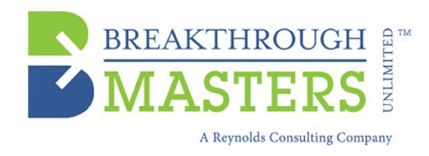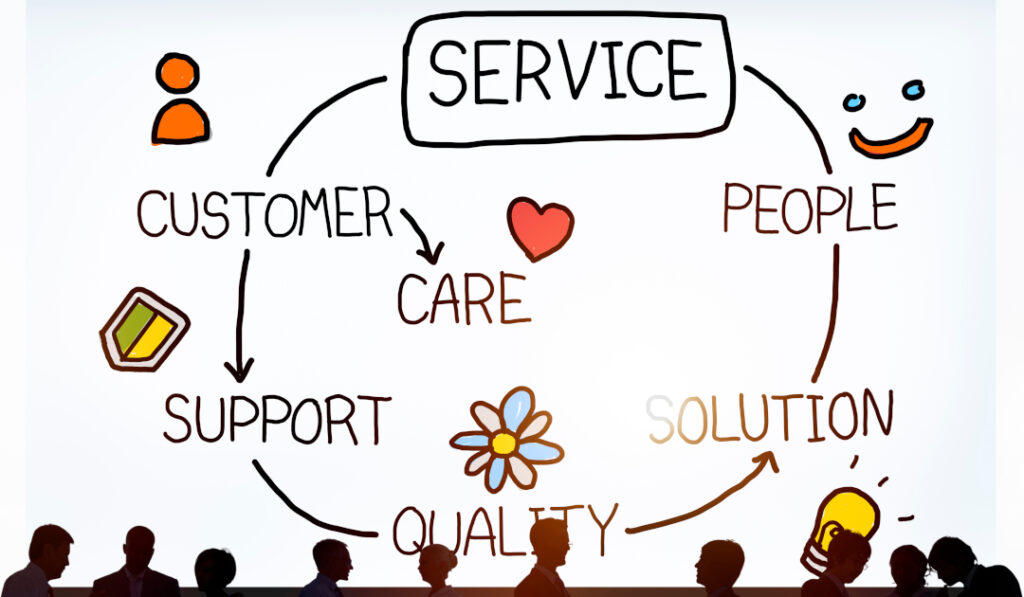Have you heard of the three-legged business stool? Price. Quality. Service. Most organizations have a model that defines how they approach each of these levers. One thing we sometimes forget is we can’t own them all (best price, best quality, best service). There are limited resources and choices to be made. Typically, we see examples of high price/high quality requiring high service. While price and quality can often be measured, service can be more in the eye of the beholder. Some use the Net Promoter Score metric. Others use leading indicators (like account revenue growth) to determine if customers are generally satisfied. And many use nothing at all outside of customer feedback. And that can be dangerous if service is crucial to the success model and one of the company’s key differentiators.
The challenge is that today customers at all price levels expect more than ever. The gap between acceptable and great is getting smaller. Companies like Amazon lead the way on establishing standards for convenience and speed. Customers don’t really care how they do it and that processes and lead times are different. They see it is possible and have a growing appetite for that as the new norm. In fact, some customers will trade speed for price.
Those companies known for exceptional service are finding that what used to be differentiating is now being emulated by competitors. The high bar has to continually be raised. Unfortunately, I see all too often that best-in-class providers don’t change their customer experience models often enough to keep the same level of gap between themselves and others. When that gap diminishes, not because the organization is doing less, but because the competitors are doing more, it challenges the price model. Loss of margin is generally when companies start paying attention to the customer experience.
Let’s look at a few examples:
- Comcast: This organization decided that they needed to re-tool the entire customer experience. In this case, going from a sub-par experience to something that wins the hearts and wallets of customers. The transformation has touched every aspect of the organization from customer service calls to embellished product development. They use NPS (Net Promoter Score) as a primary tool for tracking progress. They have initiated new protocols for service calls emphasizing timeliness and offering a discount if they are not. Even more than external changes, they are investing in cultural changes to support execution and establish consistent implementation. It is a strategic transformation. The jury is still out regarding how effective it will be, but they have invested heavily in the change with high expectations for tangible results. https://www.convinceandconvert.com/customer-experience/comcast-customer-experience/
- Delta Airlines: Delta has been on a journey to transform from financial challenges to best in service. https://esghub.delta.com/content/esg/en/2024/awards-recognition.html While operational transformation was key, the role of employees was highly recognized. According to this article, “Delta’s culture and relationship with its employees—as with any other employer—will never be perfect, but it’s certainly something the company takes seriously. In February 2020, alongside a record profit share of $1.6bn, Delta revealed a plane adorned with the words “Thank You,” made up of all 90,000 employees’ names.”
Let’s face it, flying isn’t fun on any airline, but Delta has come a long way! Until recently, I have been a fan of SWA and their unique business model and the strategic differentiation it afforded them. They are undertaking a transformation too. However, they are repositioning themselves from an economy airline to a direct competitor of Delta Airlines and it will be interesting to see if it works. In my humble opinion, they are making an obvious play for a stronger financial position so they can invest heavily in technology (in which they are woefully behind) and generate and sustain the high returns of years past. It appears company centric not customer centric and it doesn’t give me confidence that it will take them where they want to go. We shall see.
Here are a few takeaways for those who believe Customer Experience is critical for success:
- Know what your customers expect and how they will evaluate Customer Experience. In their book, The Power of Moments, Chip and Dan Heath explain how even small moments made powerful can have a transformative impact on thinking. If your budget isn’t huge, start with insights into what changes could be most meaningful and relevant to your customers.
- Take a systemic approach. While you can change one operational thing and make an impact, most often it requires all of the components to work together. Evaluate the organization from a customer centric point of view. How does shipping, accounting, and operations support the customer-facing teams to deliver a great customer experience?
- Be clear about your promise. Define it. Document it. Deliver it. And name it something unique to you. Here is a great example:
- Osprey makes rugged luggage for outdoorsmen. They provide “The All-Mighty Guarantee.” Others might call it a lifetime guarantee, but the branding used by Osprey to the customer makes the offer stand alone. It encourages them to spend $300-$500 for a duffle or outdoor bag, and take it out under any and all conditions without risk. I recently had to use this guarantee after I returned from a month in Morocco where my Osprey duffle was secured on the top of a truck along with 30 other bags, tied down by rope and bounced along on non-existent roads for 35 miles a day. The handle rods broke in the middle of the bag and the handle couldn’t be extended. Within two weeks of reporting it through a very simple turnkey process, I had a new bag. What do you call your promise?
- Technology will be a key part of the solution. Start with using AI to automate routine tasks. One client is being pressured by customers to install a tracking system for orders accessible by clients. Standard by Amazon and therefore no surprise. The business case is by doing so, it frees up high caliber personal to focus on other customer support while giving customers something they want. Other technology critical to the Customer Experience is the ability to measure the customer experience, and to track customer health. Being able to diagnose at-risk customers while they are still your customer is critical. AI can also be used for predictive selling and other valuable tools to help focus the team on the right needs at the right time.
- Finally, people matter. No one can be successful delivering a great customer experience without people who believe in it and genuinely want to excel at great service. The organization needs the culture that enables that to happen. Interestingly, I heard it first when studying the SWA model years ago. They used to believe that you treat your employees like you would want them to treat your customer.
Do you have a great Customer Experience? When is the last time you assessed its value? May be a time to find out and I would like to help!
© rawpixel, 123RF Free Images
